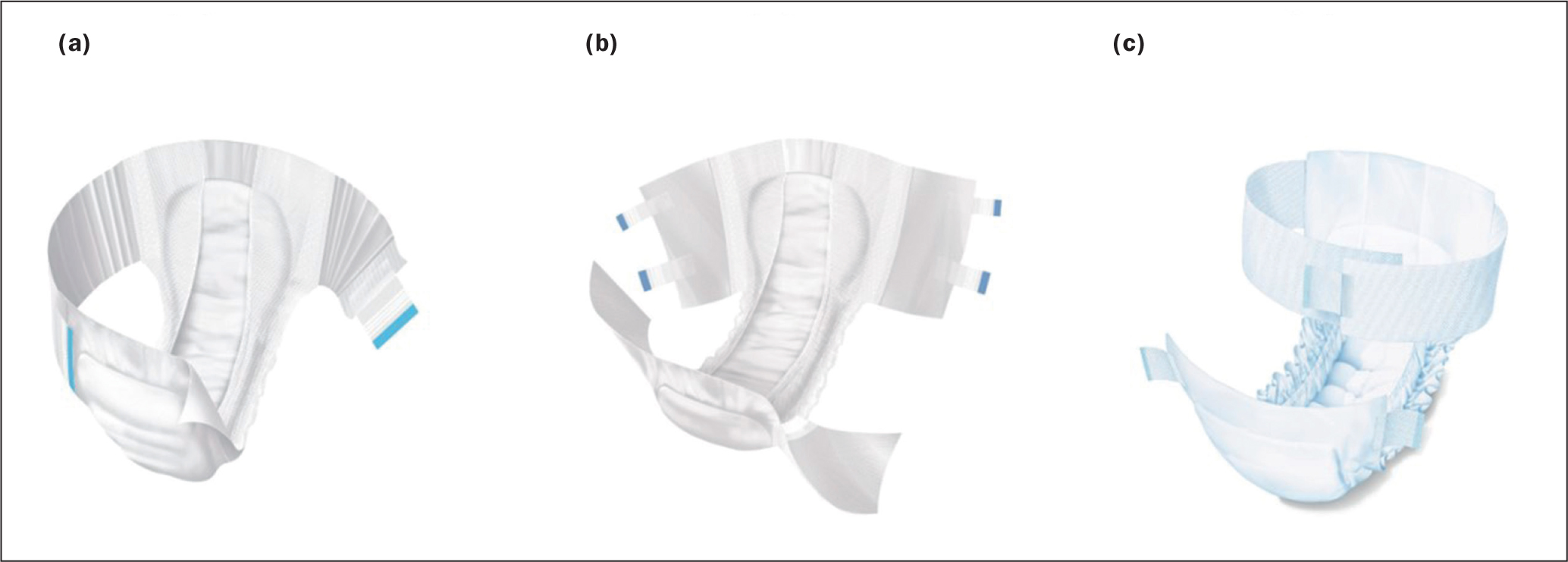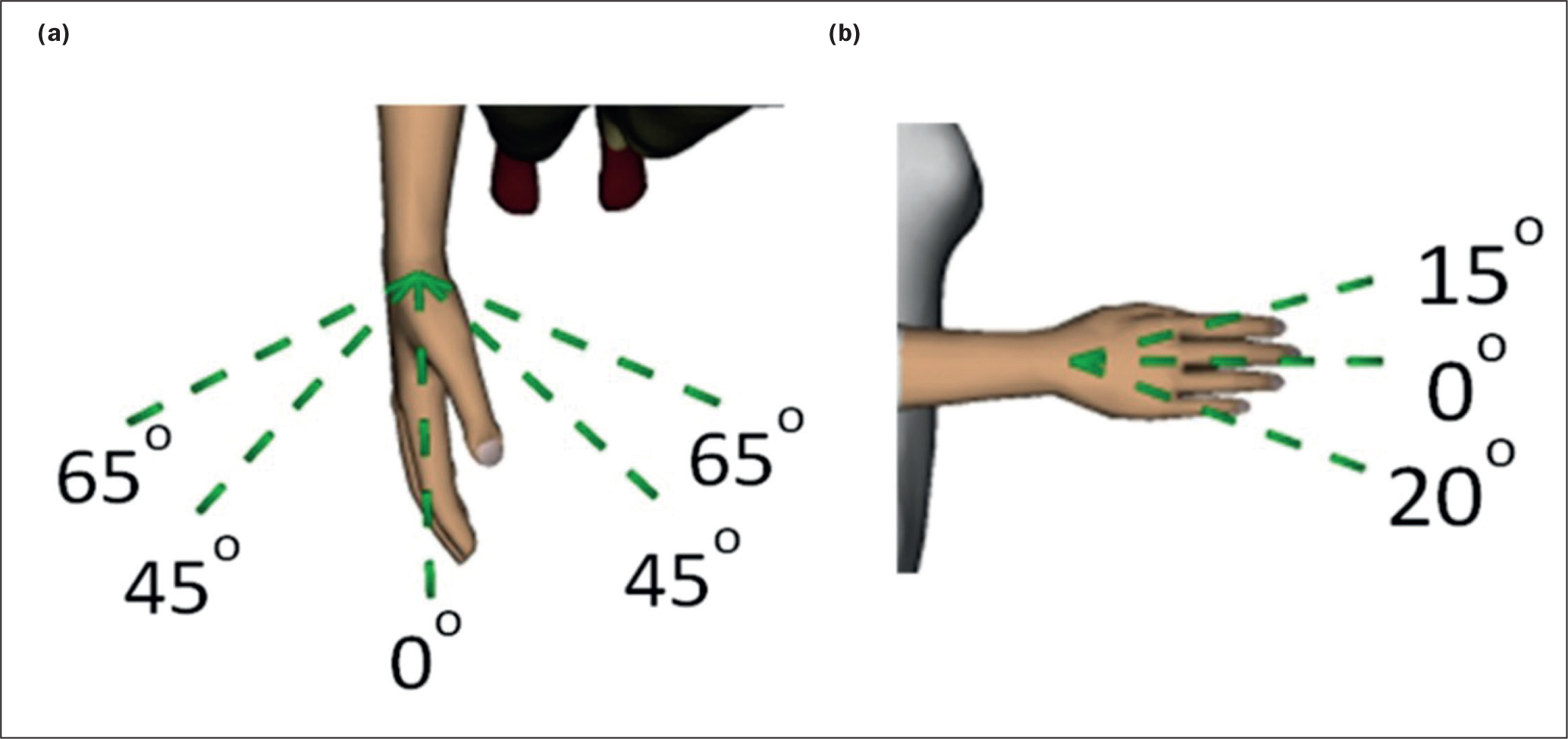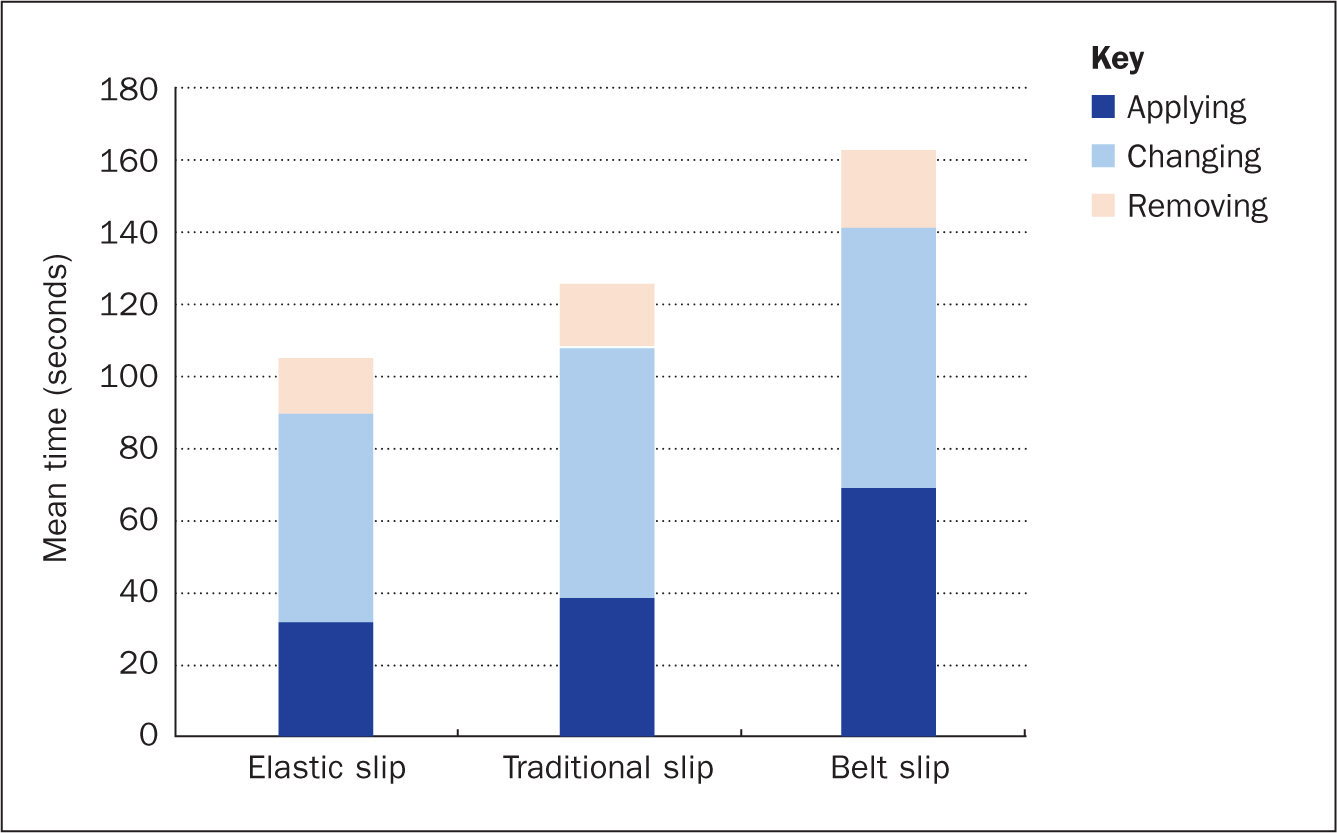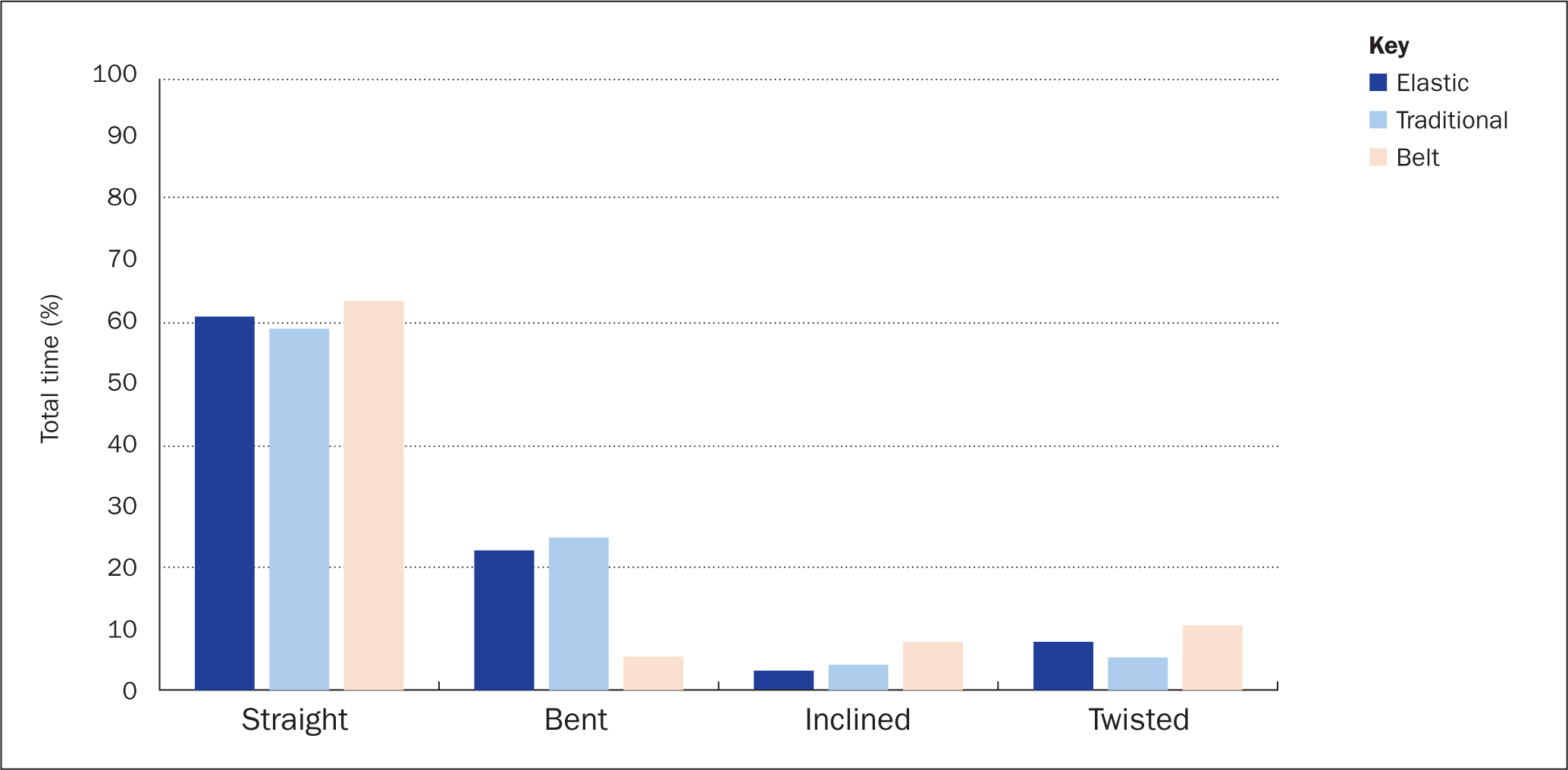The use of absorbent incontinence products often poses major problems for patients, professional caregivers and relatives. Reducing such stress as much as possible (ie, rendering product handling easier) is of great importance not only regarding the development of absorbent incontinence products but also for reducing the burden of care (Delleman and Dul, 2005; Getliffe et al, 2007; Darragh et al, 2015).
Time is economically important in both inpatient and outpatient professional care. In particular, the number of daily changes required to ensure clothing and bed linen are protected from urine leakage are important, and such protection depends on the quality and security of incontinence products used.
The time required for handling (ie, applying, changing and removing) incontinence products is important to carers and patients. The more time spent, the greater the stress experienced by the caregivers and patients (Langa et al, 2002; Delleman and Dul, 2005; Santini et al, 2016).
The primary causes of low back pain in hospital nurses, care workers in nursing homes and family caregivers include changing diapers, cleaning patients, changing posture and helping with bathing by lifting and transferring patients who require long-term care (Kyota et al, 2013; Rasmussen et al, 2018). However, the physical stress to which patients and caregivers are exposed during the handling of incontinence products is often paid little attention during incontinence product assessment.
According to international standards, the maximum holding time for the trunk, head inclinations or arm elevations should be only a few minutes (Delleman and Dul, 2005). Which postures should patients and caregivers adopt when applying, changing or removing these products? What forces do they require? What are the effects of specific product characteristics on physical stress? Ergonomic studies can provide answers to these questions, making it possible to determine what a tolerable postural stress over a long period would be. In this respect, caregiver-centred behavioural analyses are particularly helpful and can determine the physical stress arising from the handling of absorbent incontinence products. A further approach is to focus on the usability and user-friendliness of incontinence products. However, although studies in the field of ergonomics have placed greater emphasis on the ease of handling or use of products, only a few studies have been conducted so far in terms of either methodology or content (Kanerva Rice et al, 2018).
The present investigation incorporated the results of two hitherto unpublished studies conducted in 2012 and 2015, which compared various absorbent incontinence products under simulated real-life conditions. Both studies focused on evaluating the time required for handling each product, the physical stress arising from this and caregivers' assessments of these products' usability.
Incontinence products investigated
In both studies, three absorbent incontinence products were investigated: the elastic slip, the traditional slip, and the belted slip.
The elastic slip tested (MoliCare Premium Elastic) has two wide, extendable, elastic inserts on the side panels and two wide re-closable tapes (Figure 1a). The traditional slip (MoliCare Premium Slip) has non-woven side panels and four small re-closable tapes (Figure 1b). The belted slip (MoliFlex) has a belt, narrow elastic inserts and two re-closable tapes (Figure 1c); however, the MoliFlex is no longer commercially available.

All of these products are equally suitable for moderate-to-severe urinary and/or faecal incontinence in active patients and in those confined to bed. These products are single use and are changed regularly as necessary. Owing to their different shapes, the handling of these products differs considerably; therefore, the range of possible strain levels resulting from the application of these products warrants investigation.
Methods
Participants
A total of 64 registered nurses with more than 4 years of experience in nursing homes or hospitals were recruited as participants for both studies.
The first study was conducted at a professional test centre in Dortmund, Germany, over 16–21 April 2012, and the second at Hôpital Champmaillot in Dijon, France, over 5–8 October 2015. Caregivers were reimbursed for participating in the study.
Before the products were applied, training was given to minimise errors. Each nurse used all product types. In some cases, previous experience was limited to certain products used in the experiment (ie, the traditional slip and belted slip). At the time of both studies, the elastic slip was not yet commercially available.
Ethical considerations
Gaining ethics committee approval was not necessary for either ergonomic study because they addressed and simulated daily working situations. Written informed consent was obtained from participants.
Ergonomic study
Both objective and subjective methods were employed to investigate the ergonomic aspects of handling the absorbent incontinence products. The performance of users in handling the products, including the time required to ensure an optimal fit, was measured objectively. However, the strain experienced by the users and underlying efforts were not amenable to direct measurement, given that these are subjective and depend on individual factors such as experience and aptitude, as well as on environmental conditions such as specific care situations.
Before applying a product, the participants completed the Nordic Musculoskeletal Questionnaire (Crawford, 2007), which is a standardised questionnaire consisting of 40 forced-choice items used to identify the body parts causing musculoskeletal problems. To facilitate easy completion of the questionnaire, the participants were provided with a body map showing nine symptom sites: neck, shoulders, upper back, elbows, lower back, wrist/hands, hips/thighs, knees, and ankles/feet. The participants were instructed to state if they experienced any musculoskeletal problems that had impeded their normal activities within the last 12 months and the last 7 days (Crawford, 2007).
Considering the effects of individual differences between the participants in terms of skills and product handling, a within-subject design was adopted for both studies. Each participant used all product types investigated in this study in a randomised sequence.
To simulate the daily practice related to changing the incontinence products in a nursing home, hospital or home care facility, each participant had to apply and change each product on the patient three times and remove it after the third change. This procedure was designed to ensure that overall stress was acceptable among the participants and that the results obtained could be applied to real-life situations.
The duration of the test was no more than 90 minutes, and all activities were performed on an adjustable-height bed. Caregivers individually adjusted the bed height according to their body height and working habits. The time measured for the application, number of changes (three) and removal of the product could directly reflect everyday nursing care situations.
Measurement of time needed for product handling
The activities of all caregivers were filmed. The time required for applying, changing or removing a product was retrospectively determined from video data using the timer on the video.
Identification of stressful hand postures
The stress on hand/finger regions caused by high forces and unfavourable joint angles when handling the absorbent incontinence products needed to be ergonomically assessed.
Normal activities use a range of wrist angles that are known not to cause undue stress. The critical angle ranges for the wrists are approximately 45° dorsal/palmar, 20° ulnar and 15° radial deviations. In addition to a tolerance range of ±45° for dorsal/palmar deviation, there is a second limit of ±65°; however, the latter is not recommended for frequent use (Figure 2). Frequent occurrence of joint angles outside these ranges can cause joint and musculoskeletal disorders (McAtamney and Corlett, 1993; Kaufman-Cohen et al, 2018).

For the evaluation of exact stress on the hands, all activities were recorded using two video cameras at two different viewing angles. The beginning and the end of the measurement were defined as the caregiver standing upright in front of the bed with relaxed arms.
The recorded videos were analysed by an expert, and extreme positions of the hands and fingers were investigated. In addition to critical angle values, various types of grips used in handling different products, such as fist and pincer grips, were assessed. However, these data were only available for the first study.
Measurement of stress on the back/spinal column
The movement of the spinal column in all directions was determined from the changes in distances between the measurement points using ultrasonic transmitters and receivers (SonoSens) attached to the left and right of the spinal column. The bending, inclination and twisting of the cervical, thoracic and lumbar spines were determined and recorded at a frequency of 12 Hz. Transition time between ultrasonic transducers was measured for each body posture by the SonoSens monitor. Postural data were categorised into different classes: straight, bent, inclined, and twisted.
Subjective assessment of incontinence products
A specific questionnaire consisting of three questions was developed and completed by the caregivers after applying, changing and removing each product. The respondents rated ease of application, back-friendliness and speed of product application.
Data analysis
In each study, the mean measured times for handling the different products were examined using the t-test, and analysis of variance was used for connected samples.
Results
Time required for product handling
The elastic slip required the shortest time for application, changing and removal, followed by the traditional slip. Caregivers took 68 seconds to apply the belted slip, a considerably longer time than they took to apply the traditional slip (39 seconds) and elastic slip (32 seconds) (Figure 3). Furthermore, the belted slip required a longer time to change (73 seconds) and remove (21 seconds) than the other two products. The time differences between the product types with respect to their application, changing and removal ranged from a few seconds to more than half a minute.

Assuming the above-described quantitative pattern for a typical day with the application, three changes and removal of the product, a time difference of 89 seconds per day was obtained. The mean time required for handling each product type (application, changing and removal) on a typical day would be 308 seconds for the belted slip, 261 seconds for the traditional slip and 219 seconds for the elastic slip.
Stressful hand and finger postures
All videos recorded during the experiment were analysed to assess each individual's stress in the hands and fingers and the frequency of its occurrence when applying, changing and removing the products. The results indicated that handling the elastic slip involved less frequent hand rotations, hand extensions and pincer grips. Additionally, changing the elastic slip required considerably fewer stressful hand and finger postures (49.2) than changing the traditional slip (67.8) or belted slip (67.2) when applying, changing, and removing the different products.
Duration of back/spinal postures
Lateral inclinations and combined postures are considered to be highly stressful (Delleman and Dul, 2005). Figure 4 shows the relative duration of different body postures (categorised as straight, bent, inclined and twisted) adopted by the caregivers while handling the different products.

The nurses stood straight for approximately 60% of the time while handling the products. They assumed a bent posture for 25.3% and 23% of the time when handling the traditional slip and elastic slip respectively. When working with the belted slip, they assumed an inclined posture for 8.6% of the time and a twisted posture for 10.6% of the time.
Subjective assessment of product handling
Table 1 shows the nurses' subjective evaluation of product application. With respect to the ease of application, the elastic slip was rated as the best-performing product by 95.8% of the caregivers. Furthermore, 91.7% and 87.5% of respondents considered the elastic slip to be the most back friendly and to have the fastest application respectively. In contrast, only 8.3% of participants agreed that the traditional slip was easy to apply, indicating that it was the least successful product in terms of ease of application. Only 42.5% of the nurses agreed that the belted slip showed very good back-friendliness and speed when being applied. The traditional slip received the lowest ‘agree’ rating for all aspects.
Table 1. Subjective evaluation of ease of handling of different absorbent incontinence products (n=64)
| Percentage of caregivers (%) | |||
|---|---|---|---|
| Agree | Neutral | Disagree | |
| Ease of application | |||
| Elastic | 95.8 | 4.2 | 0 |
| Traditional slip | 8.3 | 62.5 | 29.2 |
| Belt | 50 | 40 | 10 |
| Back-friendliness of application | |||
| Elastic | 91.7 | 8.3 | 0 |
| Traditional slip | 8.3 | 58.3 | 33.3 |
| Belt | 42.5 | 52.5 | 5 |
| Speed of application | |||
| Elastic | 87.5 | 12.5 | 0 |
| Traditional slip | 20.8 | 62.5 | 16.7 |
| Belt | 42.5 | 52.5 | 5 |
Discussion
This study analysed the results of two studies comparing various absorbent incontinence products under simulated real-life conditions at an interval of 3 years. These two studies focused on the physical stress resulting from the use of the aforementioned products and on their usability, specifically the ease of product handling by caregivers. The results indicated that the absorbent incontinence products investigated differed considerably with respect to the time required for handling and the associated physical strain on users. The elastic slip required the shortest time for application, changing and removal by the participants. Conversely, handling the belted slip required a significantly longer time than handling the other two products.
Work-related lower back injuries occur at a high incidence among caregivers and are the most prevalent and expensive musculoskeletal disorders (Vieira et al, 2006). Considering the workload as the application, changing three times and removal of the products on a typical day, a time difference of up to 1.5 minutes between the product types was observed. Obviously, not every second counts in daily patient care. Nevertheless, the time differences measured indicate that the elastic slip is easier and more convenient to handle. Consequently, professional caregivers can reduce the duration of adverse body postures by choosing a more appropriate product. Additionally, ease of product handling may be an advantage for caregivers with less experience as they may make fewer mistakes while putting an absorbent incontinence product on a patient.
Hand disorders account for one-third of all work-related injuries, and hand injuries result from awkward postures and/or repetitive movements (Lee and Jung, 2015). In this study, the elastic slip was found to be superior to the other two products when the stress on the hands and fingers was taken into account, which is an important aspect of caregivers' health. In particular, the elastic slip required less frequent hand rotations, hand extensions and pincer grips.
A high physical workload, including lifting and twisting the back, is regarded as the main cause of musculoskeletal pain (Rasmussen et al, 2018). The assessment of body posture indicated that the caregivers tended to bend forwards while handling the traditional and elastic slips. Conversely, when applying the belted slip, a lateral inclination or twisting of the upper body, which is considered a highly stressful posture, was observed (Delleman and Dul, 2005). Therefore, the traditional slip or elastic slip should be preferred to the belted slip where possible.
The physical stress resulting from handling the incontinence products investigated reflects daily stress to a limited extent. Physical stress occurs at greater intervals in home settings, where additional activities are often carried out, and where there may be no adjustable-height bed. In hospital care, caregivers must change and wash patients with incontinence several times daily, leading to fatigue, stress and musculoskeletal strain.
The practical benefits of the elastic slip were also reflected in subjective assessments. From the nurses' perspective, the elastic slip was superior to the other two products in terms of ease, back-friendliness and speed of application. Approximately 77% of caregivers experience lower back pain each year, which is a frequent reason for long-term sick leave and early retirement (Andersen et al, 2012). Therefore, making an informed choice of absorbent incontinence products based on better fit, changing time, physical strain and ease of handling may reduce the ergonomic workload of caregivers, increase job satisfaction and consequently lead to cost savings from a reduction in sick leave (Nelson et al, 2006; Andersen and Westgaard, 2013; Ali and Alam, 2022).
In addition, work habits strongly influence body posture, and new product types and handling options do not immediately change (and sometimes do not change at all) the actual workload. Therefore, in addition to enhancing absorbent incontinence products so their handling is less stressful, caregivers' awareness of their habits should also be improved.
Limitations
The combination of the results from the two studies has some limitations in terms of their statistical significance; nonetheless, statistically significant differences were observed in the two studies.
Conclusion
The product types investigated in the present study – the elastic slip, the traditional slip and the belted slip – showed significant differences in both objective and subjective assessments. The elastic slip was superior to the other two in both objective and subjective assessments. The traditional slip and belted slip were the second-best products in the objective and subjective assessments respectively.
In conjunction with adaptations to behaviour and setting, such as adjustment of bed height and optimisation of application techniques, the use of the elastic slip can help to maintain caregivers' long-term health and simplify incontinence care, thus relieving the burden on these workers in everyday care.
KEY POINTS
- Professional caregivers should select the most appropriate product to minimise the duration of adverse body postures
- Caregivers require a substantially shorter time to handle elastic than traditional and belted slips
- Elastic slips require fewer frequent hand rotations, hand extensions and pincer grips that traditional and belted slips
- Using an elastic slip can aid in maintaining caregivers' long-term health and simplify incontinence care, thereby relieving the burden on them
CPD reflective questions
- Which postures should patients and caregivers adopt when applying, changing or removing absorbent incontinence products?
- How can choice of incontinence product save time and reduce the burden of care on nurses?
- How can product characteristics cause physical stress?


